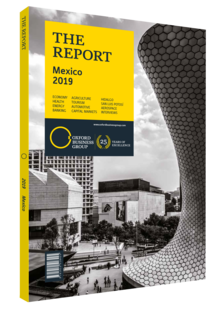Educational offerings and programmes help keep graduates in the State of Hidalgo
According to the OECD, Hidalgo’s population is currently experiencing “a youth demographic premium”, meaning young people make up a large part of the population. Furthermore, 65% of its residents are between the ages of 15 and 64. There are also greater educational opportunities than in the past, and the percentage of 19- to 25-year-olds who had completed or were in higher education grew from 5% in 1995 to 33% in 2015.
Investment in public education has raised Hidalgo’s level of basic education above the national average. In 2018 tests by the National Plan for the Evaluation of Learning ranked Hidalgo’s sixth grade students’ aptitude as seventh out of 32 states in mathematics, and 11th in terms of language and communication. Furthermore, Hidalgo boasts 106 higher education institutions, graduating over 22,000 students in 2017. “Previously, Hidalguenses had to leave in order to study, which hurt us because many young people did not return afterwards,” Noé Paredes, head of Hidalgo-based industrial and logistics conglomerate Grupo Corporation UNNE, told OBG. “The improved offering of schools and universities has allowed them to stay,” he said.
Finding a Vocation
The challenge for the government is to ensure that educational offerings match the needs of industry and allow the local population to participate in the state’s investment boom. According to Paredes, human capital suffered in the past because young people frequently left in search of work opportunities elsewhere. “This is starting to change with the investments that are arriving,” he said.
Indeed, the state government’s strategy of targeting more high-value investments is key to ensuring that enough jobs are created for those who are trained in Hidalgo to remain in the state. This will require not only good schools and universities, but also an appropriate academic and vocational focus. “At the moment, there is a strong mismatch between human capital development in educational institutions and the evolving demands of industry,” the OECD said in May 2019.
Edgar Espínola, president of the Business Coordinating Council of Hidalgo, argues that institutions have indeed developed vocations corresponding to their regions. In 2014 the Polytechnic University of Energy opened near Tula de Allende, where state-owned energy company Petróleos Mexicanos (Pemex) has its refinery and companies like UNNE and US firm Bulkmatic are building energy logistics facilities. In 2013 the Technological Mining University of Zimapán opened in the Zimapán municipality, which is home to important mining activity. The OECD notes an over-representation of social sciences and an under-representation of computer science, with the latter having 4% of enrolled students, agronomy having 2%, and services with 1% at tertiary education institutions.
Collaborations
One way to ensure that local people can find career paths in their home state is to bring educational institutions closer to the private sector. Hidalgo’s government is trying to tackle what it sees as a misalignment of information, with graduates unaware of the demand for skills within the state. In 2017 the administration launched the Mi Primer Empleo, Mi Primer Sueldo (“My First Job, My First Salary”) programme, offering graduates six-month paid internships in the private sector. As of October 2019, 2500 people had benefitted from the programme.
Hidalgo’s government is also working to ensure that investors offer their expertise to the local population in addition to hiring locally. When leading US water park operator Great Wolf Lodge chose Tepeji del Río for its first site outside the US and Canada, Hidalgo’s government proposed that the company work on a university-level programme to train potential Great Wolf employees in hospitality and family entertainment. As Hidalgo looks to meet the demands of more global corporate companies, it will require the combined efforts of the private sector, government entities and educational institutions in order to ensure that top human capital continues to be an asset for the state.
You have reached the limit of premium articles you can view for free.
Choose from the options below to purchase print or digital editions of our Reports. You can also purchase a website subscription giving you unlimited access to all of our Reports online for 12 months.
If you have already purchased this Report or have a website subscription, please login to continue.

